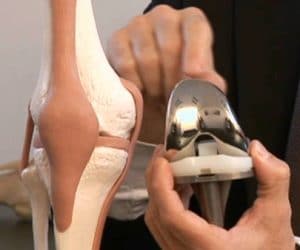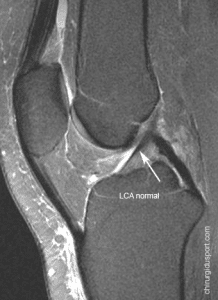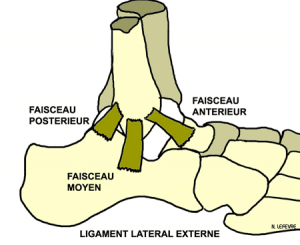Introduction:
Ambulatory surgery appears from the early twentieth century. It’s in the 70s it began to grow in the US, to grow rapidly in the 80s.
According to the International Association for Ambulatory Surgery, the “day surgery” or “outpatient surgery” are programmed surgical procedures and made in the technical conditions require an operating room, anesthesia variable mode and postoperative monitoring room Wake to without increased risk, patient out on the day of admission. The total duration of its management does not require an overnight stay in the hospital.
The development of ambulatory surgery in France has fallen behind compared to other countries of the world and Europe. Comparing the practice of ambulatory surgery in the United States, Canada and the UK has shown some differences. These are financial constraints that motivated primarily the development of ambulatory surgery in the United States and Canada. In the US, financial incentives have been implemented by public and private payers. In 1970, 35% of the paying agencies were paying the procedures performed in ambulatory surgery; this rate was 96% in 1980. Some payers, particularly Medicare, only 80% were paying surgeons fees if surgery was traditionally performed in 1982 … In 1993, arthroscopy was the first of twenty major ambulatory surgery procedures performed in independent centers of the United States.In Canada, health expenditures financing problems have motivated favoring bed closures development of ambulatory surgery.In the UK, the development of ambulatory surgery was mainly initiated by the will of the government to reduce surgical wait lists.In 1985, ambulatory surgery was officially approved by the Royal College of Surgeons of England which estimated that nearly 50% of surgical procedures could be performed as an outpatient. It established recommendations is a guide, since, regularly reassessed.
Ambulatory surgery in France:
In France, before 1991, ambulatory surgery was developing outside any legal framework and there were no statistical data to assess the role of this support. The law of 31 July 1991 has created alternative care facilities to hospitalization.In 1980, only 5% of surgical procedures were performed in outpatient and 27% in 1997. Today about 35% of patients operated on in France were supported in ambulatory surgery.This practice represents approximately 8% of the volume of public hospital sector activity and over 40% in the private sector. In the US, public and private hospitals are comparable percentage of outpatient surgery.
The development of outpatient surgery in the US was much faster from 20% of outpatient surgery in 1981 to over 83% in 2006. Meanwhile, there has been an increase in the overall surgical activity with 19.7 million procedures per year in 1986 to 50.2 million procedures per year in 2006. the development of ambulatory surgery was multiplied by 10 (4-41600000).
In France in 2008, 5 million procedures are performed annually, only 32% outpatient.
An investigation by Medicare, in February 2007, indicates that a large majority of French (80%) would be prepared to use ambulatory surgery. In the US, 94% of outpatient surgery feasible are, this rate falls to 61% in Germany and 40% in France.
Acts of outpatient surgery validated:
Currently there are eighteen validated TRACES surgical outpatient surgery (among them the cataract surgery, varicose vein surgery, simple arthroscopic knee surgery, tooth extraction …).It is a financial gain for health insurance and insurance mutual health because there is no hospital plan.
That’s a gain of comfort for as patients go home the same day and have a support “custom” or programmed in advance (pre-operative examinations, planned reception and intervention, preparation back home).
Regarding the lower limb surgery, only simple knee arthroscopy (meniscectomy) is validated. The current recommendation is to achieve over 85% simple outpatient knee arthroscopy.
Support nights of hospitalization in some hospitals, public and private, is now subject to the prior approval of the Medical Health Insurance service. Provided by the Social Security Financing Act 2008, this device means fostering development of ambulatory surgery in hospitals where it is weak.
Ambulatory surgery to Maussins-Nollet:
From August 2006 to July 2007, the clinic has performed 2,545 interventions for knee arthroscopy. 860 procedures were performed in ambulatory or about 34%.
A desire to establish and practitioners allowed to pass at a rate of 60.2% in 2009 on the gesture. This rate was calculated on all patients who underwent knee arthroscopy
1903 on knee arthroscopy, 1159 were assumed to Maussins-Nollet in outpatient settings, or 60.9%.
Subtracting patients inhabitants outside the Ile de France, is the total of 1616 patients. Of these 1616 patients, 1069 passed in the ambulatory which gives us a rate of 66.15%.Finally, a number of acts of arthroscopic surgery are not simple such as meniscectomy (NFFC004, marker act) and synovectomy (NFFA005). GHM resulting from this intervention is different from mere GHM arthroscopy. The method of calculation made by the GHM and not in the presence of the marker mere act arthroscopy is different: 1322 patients were supported in 2009, including 931 ambulatory a rate of 70.42%.We are still far from the target of 80% but the increase is constant and regular.
The ligament reconstruction project of outpatient knee:
There are no centers in France who perform surgery cruciate ligament arthroscopically through an outpatient surgery. On the theoretical level, and given the selection criteria, the ligament of the knee could be achieved by an ambulatory mode.Current interventions figures on cruciate ligaments in level 1 of arthroscopic ACL reconstruction were 1203 in 2009, 23% of the overall activity of the clinical hospital.No ligament is currently performed on an outpatient. Several possible explanations:
- the absence of reference in France in ambulatory surgery knee ligament.
- The Organizational constraints within the hospital or clinic.
- The Lack of knowledge by practitioners in ambulatory practice recommendations
- Advanced Clinical objections by surgeons who do not perceive the benefits of outpatient surgery
- The resource allocation system that does not encourage the development of ambulatory surgery knee ligament (no specific pricing)
- Legal problem, there is currently no recommendation on outpatient surgery knee ligament, by the French learned societies
Yet for a number of patients, an outpatient surgery is possible but difficult to implement.
Security remains the most important and requires the drafting of protocols between the surgical teams, anaesthesiologists and carers as part of outpatient care.
These protocols should emphasize patient information, mandated by the Law of 4 March 2002, the obligation of the anesthesia consultation and mode of issue of fitness to the street.
Preoperative surgical consultation and pre-anesthetic consultation to determine patients eligible for outpatient care. Must be eliminated against indications:
- Non-stabilized ASA III or IV
- Specific disease medical history (heart failure, lung disease asthma-like, respiratory failure, etc.)
- Addictions: drugs, alcohol …It must also meet a number of cons-indications “psycho-social”
- The patient refusal and his entourage;
- l’isolement social: the patient must indeed be accompanied after surgery to his home and monitored during the postoperative period.
- l’incompréhension and lack of patient autonomy.
- l’isolement geographic: in France, a journey of more than an hour between the hospital sector and the patient’s home or a distance greater than 100-150 km remain a cons-indication for outpatient surgery.
It should finally be non-arthroscopic or hemorrhagic little gestures whose duration does not exceed 60 to 90 minutes, patients in category ASA 0 or 1.
‘Recommendations’ post-hospitalization which have been validated by the surgical team will be given to patients.There is no standard model of these recommendations.
Organization of home monitoring in ambulatory surgery:
Monitoring at home:
- day telephone -standard and night in the hospital or clinic, once the patient to return home, he can contact a medical team round the clock.
- telephone -Follow the early days. (Nurse, anesthetist, surgeon)
- Echanges With the town doctor. (Doctor accused of outpatient surgery)
- Exchange With district nurse: identification to unityambulatory surgery.-Possibilities Traditional re-hospitalization if necessary.
- Networks City hospital: HAD surgical
- Painspecific rehabilitation
- Establishment: HAD or Specialized Institute
Assessment of patient service:
- Survey Systematic satisfaction. (Record to achieve)
- Analyses Mandatory patients: pain, complications, etc …
- Monthly -Analyses problems (monthly meetings of the study group)
- Point Of view of professionals (nursing staff, physiotherapist, anesthetist, surgeon)
- Analysis Claims
Preliminary Feasibility study of ambulatory surgery on Maussins-Nollet clinic:
From the month of November 2010 a preliminary study was started at the clinic.
The goal was to discharge patients after ligmentoplastie knee the day after surgery, either on day 1 postoperatively.
Fifteen patients were included in the study between November 2010 and February 2011.This was younger patients without ASA 1 against indication for outpatient surgery.The directions were simple ligamentoplasties (hamstring) (no recovery, no associated ligament gesture)
All patients were informed during surgical anesthesia consultation and the short duration of hospitalization. They were all agreed that protocol.
- Eleven patients were discharged as planned on D1, after seeing the physiotherapist and after dressing change.
- They came out with a prescription of analgesics validated by anesthesiologists.
- They were contacted by the surgeon the day after the release.
All were satisfied with the short hospital stay and had managed their pain with prescribed painkillers.
No patients were readmitted.
Four patients remained hospitalized 24 hours more for administrative reasons (within 48 h before going to a rehabilitation center) or comfort (one patient at home)
In total, if the patient is warned, there is no limit to get the patient the next morning. The output that evening should be possible rapidly in the continuity of this study.
Conclusion:
The development of ambulatory surgery in France has fallen behind compared to other countries of the world and Europe. Incentives and tariff measures have helped to fill some delay. There remains much work to do.
We need to improve outpatient management of simple arthroscopic knee surgery.
We also need to position ourselves to offer an outpatient surgery in the ligament of the knee.
If we have fewer patients in the preoperative beds as postoperatively, our hotel enjoys a reduced operating cost. It is able to handle more patients for the same overall cost
Keywords: ambulatory knee meniscus ligament maussins nollet
Doctor Nicolas LEFEVRE, Doctor Serge HERMAN, Doctor Yoann BOHU. – 23 octobre 2013



